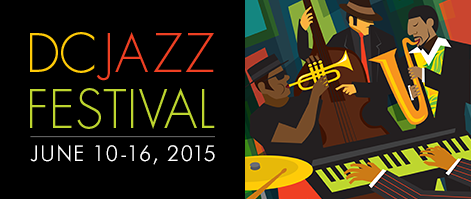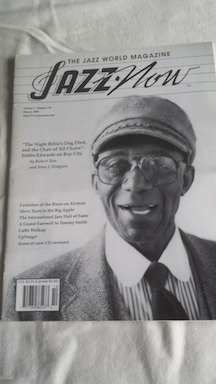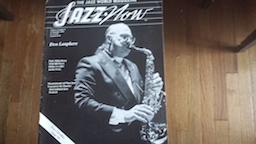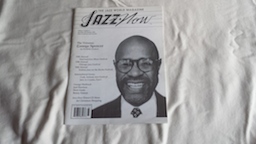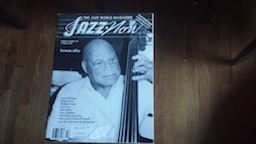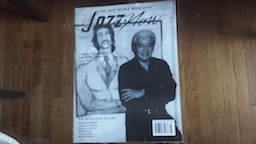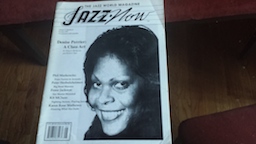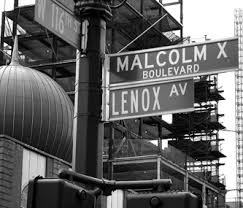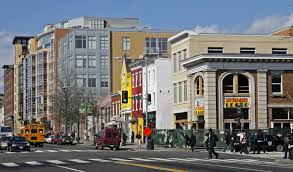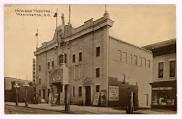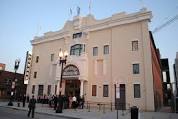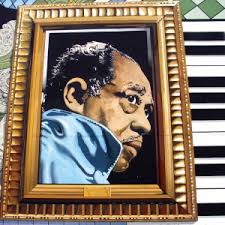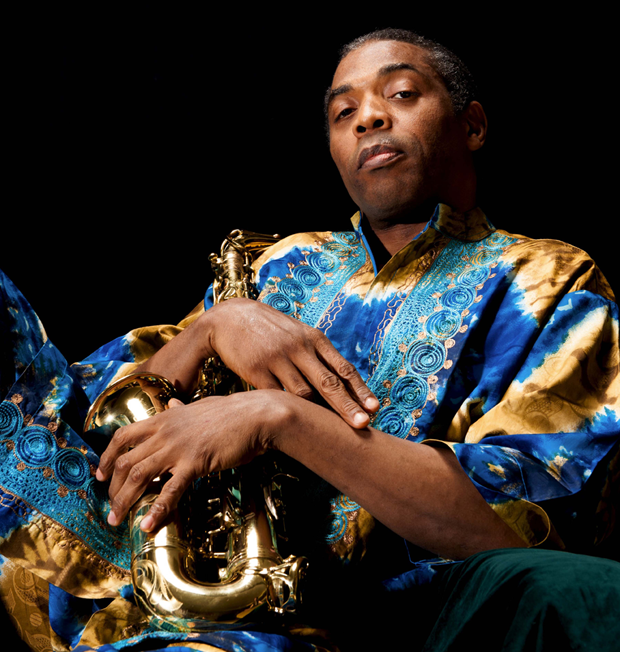A Grand Night for Mastery
The annual National Endowment for the Arts Jazz Masters awards concert is always a grand night on the annual jazz calendar. Peculiar to this art form, jazz remains both nostalgic and forever questing in forward motion. But on this night we pause to honor the greats, including the year’s newly-minted class of NEAJMs and those past Masters in the audience; and therein lies one of the charms of these events, gazing around the hall and witnessing the pride and delight which the assembled Masters seem to take in this honor and this event. This year the NEA Jazz Masters evening shifted from its longtime January calendar slot to one conducive to April’s Jazz Appreciation Month designation. Despite the date shift the evening maintained its brilliance. For one thing its always interesting to glance around the room – in this case the NEA Jazz Masters event’s home for the last several years, Jazz at Lincoln Center – and gauge the assembled Masters in the house and their collective and individual responses to the acceptance speeches and subsequent performances of their peers. Just over the railing where we were situated I caught one of my mentors, NEAJM Randy Weston at rapt attention as the young heart/old soul vocalist Cecile McLorin Salvant brought new depth to the timeless “Motherless Child” in tribute to the ancestor NEAJM Jimmy Scott. As she completed her performance a cappella, you could feel the rapt attention in the room poised to explode with applause. Hers was one of several house band serenades to the Masters, including the tasteful touch of their performing as the audience was being seated, which immediately elevated the collective attention span for the honors to come. Otherwise the performance component belonged to the new NEA Jazz Masters and friends.
Carla Bley gave a gracious, thoroughly selfless acceptance speech that was the start of a common thread in the acceptance remarks of the other two musicians – saxophonists George Coleman and Charles Lloyd – each of whom assured the audience in their individual parlance that theirs is a never-ending quest to truly learn this music; each conveying the sense that while graciously accepting this singular honor, none is ready to rest on these laurels. George Coleman, a bit halting of gait but forever brawny of tenor saxophone, teamed up with one of his acolytes, Eric Alexander, for a tenor tet-a-tet mini-set that sparkled particularly in the up tempo. Charles Lloyd brought the spiritual component with an extended performance of “Lark” from his new recording Wild Man Dance, his first for Blue Note.
This year’s NEA Jazz Masters A.B. Spellman recipient for advocacy went to the indomitable Joe Segal of Chicago’s enduring Jazz Showcase club. NEAJM Jimmy Heath introduced Segal with his usual puckish humor, then brought out his soprano sax to join Chicago’s own Ira Sullivan on alto for a squarely in the pocket tribute performance.
Word has it that the 2016 NEA Jazz Masters event will be held in DC; stay tuned… Here are some photos from this lovely evening, all courtesy of the keen eye of photographer Michael G. Stewart.
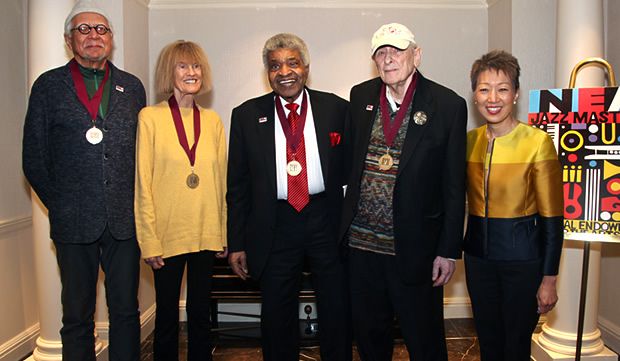
NEA JAZZ MASTERS CLASS OF 2015: l-to-r CHARLES LLOYD, CARLA BLEY, GEORGE COLEMAN, JOE SEGAL WITH NEA CHAIRMAN JANE CHU
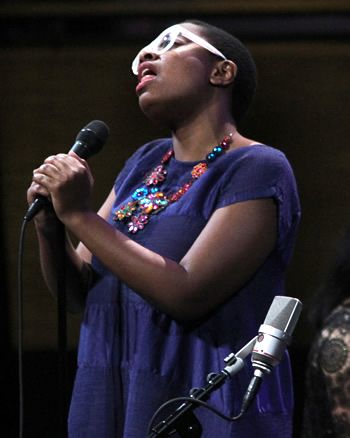
CECILE MCLORIN SALVANT GAVE A SPELLBINDING READING OF “MOTHERLESS CHILD”
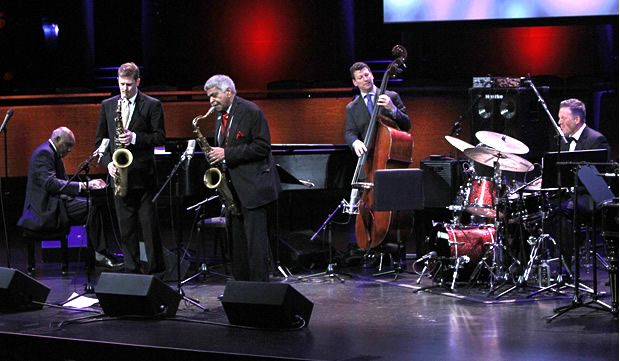
GEORGE COLEMAN WAS COMMANDING ON TENOR WITH ONE OF HIS ERSTWHILE STUDENTS, ERIC ALEXANDER, AND HAROLD MABERN ON PIANO
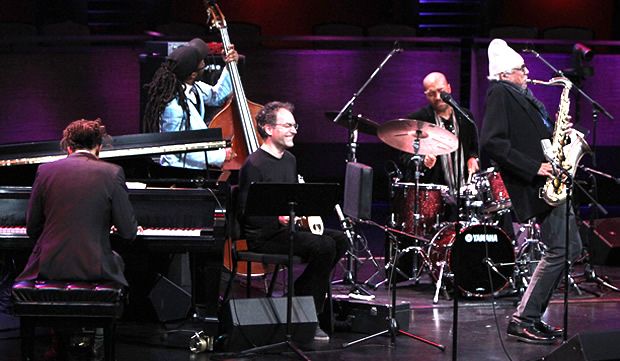
CHARLES LLOYD W/GERALD CLAYTON, JOE SANDERS, ERIC HARLAND, AND SOKRATOS SINOPOUOLOS
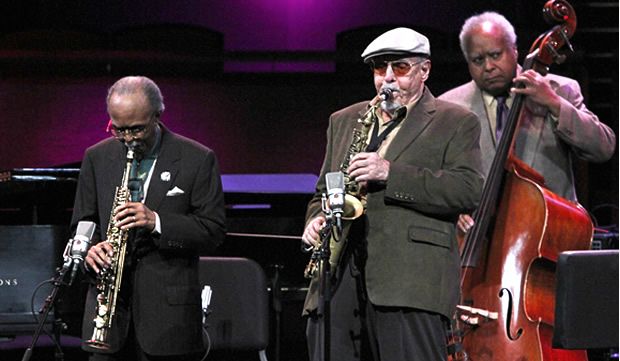
JIMMY HEATH & IRA SULLIVAN PROVING ONCE AGAIN THAT “BEBOP IS THE MUSIC OF THE FUTURE”, AS NEAJM DEXTER GORDON SAID
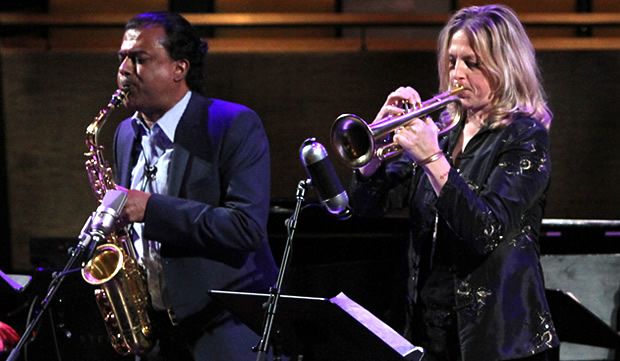
THE HOUSE BAND FRONTLINE INCLUDED RUDRESH MAHANTHAPPA ON ALTO, INGRID JENSEN ON TRUMPET, HELEN SUNG ON PIANO, RUDY ROYSTON ON DRUMS
………………………………………………………………………………………………………………………………………………………………………………………….
DC Jazz Festival Announces Lineup for
Jazz in the ‘Hoods Presented by Events DC
Neighborhood Venues Host More Than 80 Performances Citywide
One of the hallmarks of the annual DC Jazz Festival (full disclosure: your correspondent, Willard Jenkins is Artistic Director of DCJF) is its big tent component known as Jazz in the ‘Hoods. This annual celebration of the broad spectrum of jazz in our Nation’s Capital (a significant percentage of which is presented free of charge) is a vibrant component that includes venues and jazz producers from every quadrant of our city (Northeast, Northwest, Southeast, Southwest), including jazz presented in neighborhoods that are generally deprived of live opportunities to experience this art of the improvisers, such as east of the Anacostia River. Here’s the 411 on our Jazz in the ‘Hoods component for 2016. For complete DC Jazz Festival information visit www.dcjazzgest.org
WASHINGTON, April 20, 2015 — The DC Jazz Festival is thrilled to announce the schedule for Jazz in the ‘Hoods Presented by Events DC. Jazz in the ‘Hoods is a major feature of the DC Jazz Festival (June 10-16) that highlights the city as a vibrant cultural capital, and brings jazz to all four quadrants of the nation’s capital – NE/NW/SE/SW. Over 80 performances at more than 40 neighborhood venues will entertain Washington, DC residents and visitors across the city.
”The DC Jazz Festival has grown into the largest music festival in the District of Columbia and as a supporter of the DC Jazz Festival for the last seven years, we are proud to be associated with the overall growth of the festival and in particular, Jazz in the ‘Hoods,” said Erik A. Moses, managing director of Events DC’s Sports and Entertainment Division. “The Jazz in the ‘Hoods series brings people together to enjoy great jazz in a variety of DC’s coolest neighborhood venues.”
Jazz in the ‘Hoods Presented by Events DC represents an exciting partnership with local clubs, restaurants, hotels and galleries in celebration of jazz in our nation’s capital. Jazz in the ‘Hoods takes place in over 40 DC venues with more than 80 performances in 21 neighborhoods throughout the city, presenting a mix of local and nationally recognized artists in an attempt to recognize and celebrate the genre. It has a tradition of attracting large, varied audiences of DC residents and tourists of great diversity.
For the fifth consecutive year, Jazz in the ‘Hoods will include CapitalBop’s DC Jazz Loft Series. A partnership of DC Jazz Festival and CapitalBop, DC Jazz Loft Series will present young, boundary breaking musicians as well as DC-based artists all grounded in the tradition of jazz and its extensions, often performing in unusual or pop-up venues. This is a “pay-what-you-can” series designed to attract the broadest spectrum of attendees, including young, first-time audiences.
The EAST RIVER JazzFEST returns for its 4th year. In collaboration with East River Jazz, a “festival within a festival” will present free jazz performances and programs to thousands of residents, at theaters, museums, places of worship, libraries and senior centers east of the Anacostia River. All EAST RIVER JazzFEST performances will celebrate American composer Billy Strayhorn, Duke Ellington’s chief collaborator
With a variety of free and ticketed performances in 21 neighborhoods, including Adams Morgan, Capitol Hill, Chinatown, Downtown, Dupont Circle, Foggy Bottom, Georgetown, Mount Pleasant, the H Street Corridor, Southeast, Southwest, Takoma Park, the U Street Corridor and Woodley Park, Jazz in the ‘Hoods annually attracts a vibrant audience of thousands of music enthusiasts.
New in 2015: the University of the District of Columbia is partnering with DC JazzFest on music and education programs, including a Bossa Nova exhibition from the Felix E. Grant Jazz Archives, launching in June and running the entire summer. The Kennedy Center’s Millennium Stage will host the Discovery Series, five free concerts highlighting up-and-coming young artists. And, Transparent Productions, the DC area’s purveyor of cutting edge performances, will bring their unique flavor to the Festival.
Participating venue partners include Bohemian Caverns, Twins Jazz, Sixth & I Historic Synagogue, Kennedy Center Millennium Stage, Atlas Performing Arts Center, and Gallery on H, and National Gallery of Arts Sculpture Garden, among others. Jazz in the ‘Hoods also features CapitalBop’s D.C. Jazz Loft Series at the Hecht’s Warehouse, THEARC and the EAST RIVER JazzFEST Series.
“Jazz in the Hoods is a classic manifestation of the DC Jazz Festival’s diverse, ‘big tent’ offerings, partnering with vibrant spaces and adventurous presenters around town to bring exciting artistry to our community,” said Willard Jenkins, the DCJF’s Artistic Director.
Jazz in the ‘Hoods showcases a virtual cornucopia of nationally and internationally acclaimed artists and numerous outstanding D.C.-based jazz groups. The schedule to date includes:
Anacostia Arts Center (1231 Good Hope Rd, SE)
June 13, 10:00 AM, The Lovejoy Group; Saturday Morning Jazz Brunch
Atlas Performing Arts Center (1333 H St, NE)
June 11, 8:00 PM, Brad Linde’s BIG OL’ ENSEMBLE feat. Elliot Hughes
June 14, 6:00 PM & 8:30 PM, In Jazz We Trust: Music in Motion/ The Princess Mhoon Dance Project
Bistrot Lepic & Wine Bar (1736 Wisconsin Ave, NW)
June 10, Jazz in the Wine Room
June 15, Jazz in the Wine Room
Bohemian Caverns (2001 11th St, NW)
June 10, 7:30 PM & 9:30 PM, Braxton Cook
June 11, 7:30 & 9:30 PM, Gretchen Parlato / Lionel Loueke Duo
June 12. 8:00 PM & 10:00 PM, Gretchen Parlato / Lionel Loueke Duo
June 13, 8:00 PM & 10:00 PM, Nicholas Payton
June 14, 4:30 PM, AfroHORN (a Transparent Production)
June 14, 7:00 PM & 9:00 PM, Nicholas Payton
June 15, 8:00 PM & 10:00 PM, Bohemian Caverns Jazz Orchestra (with Special Guest Oliver Lake)
June 16, 7:30 PM & 9:30PM, Artist in Residence: Christie Dashiell
Children’s National (111 Michigan Ave, NW)
June 16, 12:30 PM, Charles Rahmat Woods
June 16, 2:30 PM, Laura Sperling
Dorothy I. Heights Benning Neighborhood Library (3935 Benning Rd, NE)
June 15, 2:00 PM, Iva Jean Ambush and Jazz Abuscade: Billy Strayhorn and Lena Horne/They’re Together Again
Dukem Jazz (1114-1118 U St, NW)
June 11, 9:00 PM & 10:30 PM, Mark Meadows Quartet
Francis A. Gregory Neighborhood Library (3660 Alabama Ave, SE)
June 12, 1:00 – 3:00 PM, Janelle Gill Ensemble: Exploring Strayhorn
June 13, 2:00 – 4:30 PM, Christylez Bacon: Strayhorn from a Hip-Hop Perspective
Gallery On H (1354 H St, NE)
June 12, 8:00 – 11:00 PM, Music in the Courtyard
June 13, 7:00 – 11:00 PM, Jazz Circus in the Courtyard
June 14, 2:00 – 7:00 PM, Music in the Courtyard
Haydee’s Restaurant (3102 Mt Pleasant St, NW)
June 11, 7:00 PM, Rock Creek jazz
June 12, 9:00 PM, Little Red & The Renegades
June 13, 7:00 PM, D-6 Jazz Band
CapitalBop’s DC Jazz Loft Series at Hecht Warehouse (1401 New York Avenue, NE)
June 11, 8;00 PM, Trio of Trios: Gary Thomas / Warren Wolf / Young Lions
June 12, 9:30 PM, Thundercat / Sam Prather‘s Groove Orchestra
June 13, 8:00 PM – 12:00 AM, AACM at 50: Ernest Dawkins, Nicole Mitchell, Mike Reed, Tomeka Reid
Hill Center at the Old Naval Hospital (921 Pennsylvania Ave, SE)
June 14, 5:00 PM, CapitalBop’s Hot 5 at Hill Center, feat. Fred Foss
Honfleur Gallery (1241 Good Hope Rd, SE)
June 14, 1:00 – 3:30 PM, Reginald Cyntje Ensemble: Strayhorn, Caribean Interpretations
Japan Information and Cultural Center (1150 18th St, NW)
June 11, 6:30 PM, Nobuki Takamen
Jojo’s Restaurant and Grill (1515 U St, NW)
June 10 & 11, 7:30 – 11:30 PM, Live Jazz, Blues & R&B
June 12, 10:00 PM – 2:30 AM, Late Night Live Jazz, Blues & R&B
June 14 – 16, 7:30 – 11:30 PM, Live Jazz, Blues & R&B
Kenilworth Aquatic Gardens (1550 Anacostia Ave, NE)
June 14, 10:00 AM, Herman Burney/ Reginald Cyntje: Sunday Morning Strayhorn Duet
Kennedy Center Millennium Stage (2700 F St, NW)
DC Jazz Festival “Discovery Series”
June 8, 6:00 PM, Elijah Jamal Balbed Jo-Go Project
June 10, 6:00 PM, Sweet Lu Olutosin
June 12, 6:00 PM, Alison Crockett
June 13, 6:00 PM, Sine Qua Non
June 14, 6:00 PM, Crush Funk Brass
National Gallery of Art Sculpture Garden (7th St & Constitution Avenue, NW)
June 12, 5:00 – 8:30 PM, George V. Johnson, Jr.
NYU/DC Abramson Family Auditorium (1307 L St, NW)
June 12, 12:00 PM, Meet the Artist: Edmar Casteñeda
June 13, 12:00 PM, Meet the Artist: NEA Jazz Master Jack DeJohnette
Renaissance Downtown DC (999 9th St, NW)
June 10, 5:00 – 8:00 PM, David Schulman and Quite Life Motel
June 12, 5:00 – 8:00 PM, Kenny Nunn-Trio
Renaissance DuPont Circle (1443 New Hampshire Ave, NW)
June 11, 5:00 – 8:oo PM, Eliot Seppa Trio
June 12, 5:00 PM – 8:00 PM, Colin Chambers Trio
Rumba Café (2443 18th St, NW)
June 10, “La Trifulca” Live Tango Music, Emmanuel Trifilio in Bandoneon
June 11, 9:00 PM, Martin Zuniga Quartet, Afro Peruvian Music
June 12, 11:00 PM, Joe Falero’s Band, Latin Jazz, Boleros, Rumba
June 13, 11:00 PM, Kique’s Band, South American Rock Pop Acoustic
June 14, 9:00 PM, Pavel Urkiza” Cuban Troubadour – Ibero American World Music
Sixth & I Historic Synagogue (600 I St, NW)
June 14, 2:00 PM, Meet the Artist: Billy Hart of The Cookers
June 14, 8:00 PM, The Cookers feat. George Cables, Billy Harper, Donald Harrison, Billy Hart, Eddie Henderson, Cecil McBee, and David Weiss (including post-concert Meet the Artist Q&A)
Takoma Station Tavern (6914 4th St, NW)
June 10, 7:00 PM, Brilliant Corners featuring T. Sharron
June 11, 7:00 PM, Dial 251
June 16, 7:00 PM, Bill Freed with First and Third (Jam Session)
Town Hall Education Arts Recreation Campus (THEARC) (1901 Mississippi Ave, SE)
June 9, 10:30 AM, Jazz Meets Hip Hop: The W.E.S. Group – Free-registration required
Tryst (2459 18th St, NW)
June 12, 9:00 PM, Pocket Funk
June 15, 8:00 PM, Electric Trio
June 16, 8:00 PM, Wytold – Cello Soloist
Tudor Place Historic House and Garden (1644 31st St, NW)
June 10, 6:00 PM, James King String DUO with Donato Soviero
Twins Jazz (1344 U Street, NW)
June 11, 8:00 & 10:00 PM, Sasha Elliot
June 12, 9:00 & 11:00 PM, Michael Thomas Quintet
June 13, 9:00 & 11;00 PM, Michael Thomas Quintet
June 14, 8:00 & 10:00 PM, Marty Nau
Uniontown Bar and Grill (2200 Martin Luther King Junior Ave, SE)
June 13, 8:00 PM, Greg Hatza’s Organ Blues Band: Blues – Strayhorn – Blues
UDC Felix E. Grant Jazz Archives: Learning Resources Division (Library Building 41, Level-A) (4200 Connecticut Ave, NW)
Summer 2015, Mon-Sat, Library Hours, Exhibition: Bringing Bossa Nova to the United States
UDC: Recital Hall (Performing Arts Building 46-West) (4200 Connecticut Ave, NW)
June 9, 7:00 PM, JAZZforum: Muneer Nasser-UpWrite Bass: The Musical Life and Legacy of Jamil Nasser
UDC Amphitheatre (4200 Connecticut Ave, NW)
June 15, 7:00 PM, JAZZAlive in the Hood: Bruce Williams with Allyn Johnson and the UDC JAZZtet
We Act Radio (1918 Martin Luther King Junior Ave, SE)
June 14, 1:00 PM, Various Children Essays & Videos: A Strayhorn-Inspired Historical Collage Pop-Up
June 14, 4:00 – 7:00 PM, Pepe Gonzalez Afro-Cuban/Latin Jazz Ensemble: Strayhorn inspired Afro-Cuban Jazz
The 2015 DC Jazz Festival will be held June 10-16. For a complete schedule and more information, visit www.dcjazzfest.org.
Keep up with the DCJF:
• Twitter: twitter.com/dcjazzfest
• Facebook: facebook.com/dcjazzfest
• Instagram: instagram.com/dcjazzfest
• Flickr: flickr.com/photos/dcjazzfest
• Foursquare: foursquare.com/dcjazzfest
About DC Jazz Festival® (DCJF)
With more than 125 performances in nearly 60 venues across the city, the DC JazzFest is one of the largest music festivals in the country. A 501(c)(3) non-profit organization, the DCJF has experienced spectacular year-by-year growth. As the fastest-growing jazz festival in the U.S., the DCJF celebrates America’s unique original art form during this international event that attracts jazz lovers from around the world to the nation’s capital. The DCJF also presents year-round programs with performances featuring local, nationally and internationally acclaimed artists. The DCJF’s mission is to promote music, particularly jazz, education programs and actively support community outreach to expand and diversify its audience of jazz enthusiasts. The 2015 DC JazzFest will take place June 10-16. For more information about the DCJF and its activities, visit www.dcjazzfest.org.
About Events DC
Events DC, the official convention and sports authority for the District of Columbia, delivers premier event services and flexible venues across the nation’s capital. Leveraging the power of a world-class destination and creating amazing attendee experiences, Events DC generates economic and community benefits through the attraction and promotion of business, athletic, entertainment and cultural activities. Events DC oversees the Walter E. Washington Convention Center, an anchor of the District’s hospitality and tourism economy that generates over $400 million annually in total economic impact, and the historic Carnegie Library at Mt. Vernon Square. Events DC manages the Stadium-Armory campus, which includes Robert F. Kennedy Memorial Stadium and surrounding Festival Grounds, the non-military functions of the DC Armory and Maloof Skate Park at RFK Stadium. Events DC also built and now serves as landlord for Nationals Park, the first LEED-certified major professional sports stadium in the United States. For more information, please visit www.eventsdc.com.
Proud major sponsors of the DC JazzFest, to date, include: Events DC; Forest City Washington, Capitol Riverfront Business Improvement District, The Washington Post; ABC7/WJLA-TV and News Channel 8; Squire Patton Boggs, LLP; LCG, Sage Communications; Clyde’s Restaurant Group and Hamilton Live; Renaissance Hotels, Destination DC; WHUR; the Washington City Paper; Linda and Michael Sonnenreich; Amtrak; WMATA; The Washington Informer; WAMU, Washington Parent, WPFW, and Hipnotic Records.
The DC Jazz Festival®, a 501(c)(3) non-profit service organization, is made possible, in part, with major grants from the Government of the District of Columbia, Muriel Bowser, Mayor; and, in part, by major grants from the Anne and Ronald J. Abramson Family Foundation, Morris and Gwendolyn Cafritz Foundation, Mayo Charitable Foundation, Venable Foundation, NEA Foundation, CrossCurrents Foundation, New Music USA; and with a grant from the National Endowment for the Arts and the DC Commission on the Arts and Humanities, an agency supported in part by the National Endowment for the Arts; and by the City Fund, administered by The Community Foundation for the National Capital Region. ©2015 DC Jazz Festival. All rights reserved.
Complete information: WWW.DCJAZZFEST.ORG

